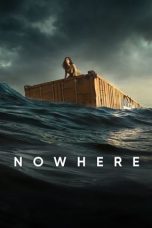- Source: Glatton (1762 EIC ship)
Monsters University (2013)
Cowboy Bebop: The Movie (2001)
Strays (2023)
In the Heart of the Sea (2015)
The Hunger Games (2012)
Project Wolf Hunting (2022)
Azor (2021)
The Spy Who Loved Me (1977)
Robot Dreams (2023)
Nowhere (2023)
Suncoast (2024)
No More Posts Available.
No more pages to load.
Glatton was launched as an East Indiaman. She made four voyages for the British East India Company (EIC) before her owners sold her in 1772. Her new owner, James Mather, renamed her Lord Howe and first deployed her to bring timber from North America to England. Mather then hired her out as a transport. She was last listed in 1782 and was probably the "ordinance storeship Lord Howe" that foundered in that year.
Career
1st EIC voyage (1763–1764): Captain Richard Doveton sailed from Portsmouth on 7 March 1763, bound for the East Indies and China. Glatton reached Benkulen on 29 July, and Batavia on 6 November. She arrived at Whampoa anchorage on 30 January 1764. Homeward-bound, she crossed the Second Bar on 25 March, reached st Helena on 8 August, and arrived back at Long Reach on 15 November.
2nd EIC voyage (1765–1767): Captain Doveton sailed from the Downs on 26 December 1765, bound for Madras and China. Glatton reached the Cape on 27 March 1766, and Madras on 6 June. She arrived at Whampoa on 8 September. Homeward-bound, she crossed the Second Bar on 10 January 1767, reached St Helena on 21 April 1767, and arrived back at the Downs on 9 July.
3rd EIC voyage (1769–1770): Captain Doveton sailed from the Downs on 2 January 1769, bound for China. Glatton arrived at Whampoa on 12 July. Homeward-bound, she crossed the Second Bar on 29 November, reached St Helena on 20 February 1770, and arrived back at the Downs on 26 April.
4th EIC voyage (1771–1772): Captain Doveton sailed from Portsmouth on 6 February 1771, bound for China. Glatton reached Batavia on 20 June and arrived at Whampoa on 8 August. Homeward-bound, she crossed the Second Bar on 7 January 1772, reached St Helena on 11 April, and arrived at the Downs on 24 June.
Richard Neave sold Glatton in 1772.
Lord Howe (1772–1781): James Mather purchased Glatton and renamed her Lord Howe. Missing volumes of Lloyd's Register (LR) have resulted in Lord Howe first appearing in LR in 1776.
On 10 May 1776 the transport Lord Howe, Oswald, master, was among the transports that brought troops and supplies for the relief of Quebec.
One source has the Americans seizing the transport Lord Howe in Boston on 17 June 1776 when she arrived there after the British had evacuated the town. The vessel seized appears to have been a different Lord Howe, as the former Glatton continued to appear in LR with updated data.
While Lord Howe was at Quebec she was apparently hired for a time as an armed ship, with the Royal Navy appointing a naval officer to command her. Commander Thomas Pringle commanded the "Lord Howe armed ship" from 10 May to 25 November. However, he was also appointed to command the British naval forces on Lake Champlain. These forces succeeded on 11 and 13 November 1776 in destroying almost the entire American flotilla there.
Fate
The "Ordinance storeship Lord Howe", from London, foundered on 17 October 1781 at 45°26′N 41°00′W. The crew were saved.
Lord Howe (ex-Glatton) was last listed in 1781.
Notes
Citations
References
Hackman, Rowan (2001). Ships of the East India Company. Gravesend, Kent: World Ship Society. ISBN 0-905617-96-7.
Hardy, Charles (1800). A Register of Ships, Employed in the Service of the Hon. the United East India Company, from the Union of the Two Companies, in 1707, to the Year 1760: Specifying the Number of Voyages, Tonnage, Commanders, and Stations. To which is Added, from the Latter Period to the Present Time, the Managing Owners, Principal Officers, Surgeons, and Pursers; with the Dates of Their Sailing and Arrival: Also, an Appendix, Containing Many Particulars, Interesting to Those Concerned in the East India Commerce. Charles Hardy.






























